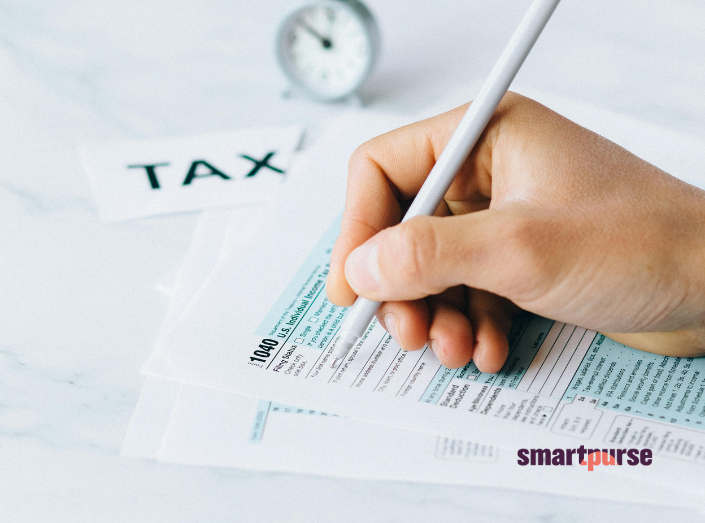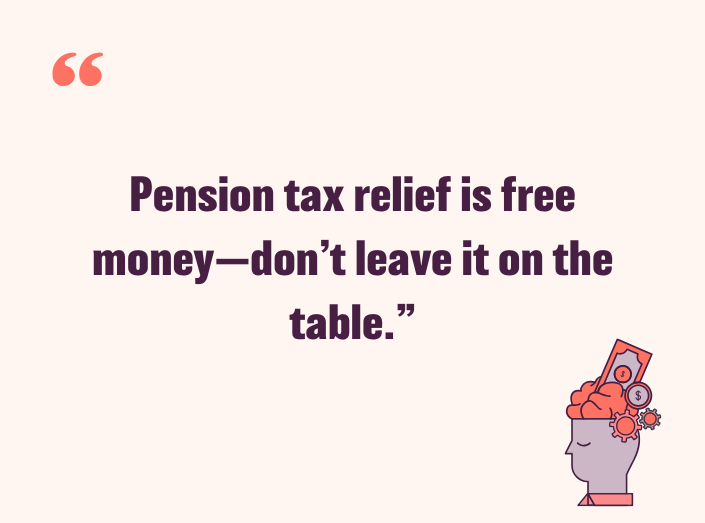Let’s keep it simple—here’s the deal.
Saving for retirement in the UK comes with a hidden bonus that many people don’t fully understand — or take advantage of. It’s called pension tax relief, and it’s one of the most effective ways to grow your pension pot without doing much extra work. Every time you make a qualifying pension contribution, the government rewards you by giving back some of the income tax you’ve already paid.
This generous system applies to most people making contributions to a registered pension scheme. But to use it to your full advantage, it helps to understand how the rules work and how they apply to your unique financial situation — whether you’re employed, self-employed, or approaching retirement.
In this article, we’ll explore six practical, clever ways to make pension tax relief work harder for you. From claiming the right amount of tax relief to using contributions to manage your income tax band, these strategies can help you build a stronger, more tax-efficient future.

Here are six ways to use tax relief to give your pension a boost:
Understand How Pension Tax Relief Works
At its core, pension tax relief is the government’s way of encouraging people to save for retirement. When you put money into a pension, you normally do so from income that has already been taxed. Tax relief is a way to return some of that income tax, boosting the total amount that goes into your pension.
If you’re a basic rate taxpayer, this means for every £80 you pay in, the government tops it up with £20. That gives you £100 in your pension pot, even though it only cost you £80. The same principle applies to higher rate and additional rate taxpayers, but they must actively claim the extra via their self-assessment tax return.
The two main methods are relief at source, where the pension provider automatically claims the tax back from HMRC, and net pay arrangements, where contributions are deducted from your salary before income tax is applied. Understanding which system your pension scheme uses is key to making sure you don’t miss out on any of your tax relief entitlement.
Maximise Your Annual Allowance
There is a limit to how much you can contribute to your pension each year while still receiving tax relief. This limit is known as the annual allowance, and for most people, it’s set at £60,000 or 100% of their UK earnings — whichever is lower.
Going above the annual allowance could trigger a tax charge, which means you’d lose the tax advantages on the excess. However, there’s some flexibility built in. If you didn’t use your full allowance in the last three years, you may be able to carry forward the unused portions and make a larger contribution now, still benefiting from full pension tax relief.
This is especially useful for those in fluctuating income brackets or those who want to front-load their retirement savings closer to their retirement date.

Don’t Miss Extra Relief if You’re a Higher or Additional Rate Taxpayer
While basic rate tax relief is typically added automatically to your pension contributions, the situation is different if you’re paying higher rate or additional rate tax. In those cases, only part of the relief is added by your provider; the rest must be claimed through your tax return.
Many people forget to do this and end up losing out on thousands of pounds in additional pension tax relief. If your income puts you into the 40% or 45% tax bands, taking the time to file a self-assessment tax return could dramatically increase the tax benefits of your contributions. You can choose to have the money refunded to you or left in your pension to further grow your pension pot.
This applies not only to employees but also to self-employed individuals who are responsible for managing their own contributions and tax filings.
Make Personal Contributions as a Self-Employed Worker
For the self-employed, saving for retirement requires a more proactive approach. There’s no employer pension scheme automatically enrolling you or topping up your contributions, which means every pound you save must come from your own pocket. But the good news is you still get tax relief.
By setting up a personal pension — such as a stakeholder pension or a self-invested personal pension (SIPP) — you can claim basic rate tax relief automatically, and if you qualify for higher rate relief, you can claim the rest through your self-assessment. The same annual allowance applies, and contributions are still capped at the lower of your annual income or £60,000.
The key here is consistency. By making regular contributions and claiming your full tax relief, you’re not only building a more substantial pension pot but also reducing your tax bill each year.

Use Contributions to Manage Your Income Tax Bracket
One of the lesser-known but highly effective benefits of pension tax relief is its ability to lower your taxable income, which can help you avoid tipping into a higher income tax band.
Let’s say your annual income is just over the £50,270 threshold for the 40% higher rate of tax. By making pension contributions that reduce your taxable income below that line, you can stay within the basic rate band and avoid paying additional tax. This is known as "income smoothing" and is commonly used by people nearing key thresholds like the loss of child benefit or the personal allowance taper, which kicks in at £100,000 income.
Even modest contributions can have a big impact, especially when timed carefully at the end of the tax year. It’s a smart move for anyone seeking to both grow their retirement fund and avoid unnecessary tax burdens.
Boost Your Partner’s Pension with Tax Relief
Finally, pension tax relief can also benefit couples — especially when one partner earns less or isn’t working. You can contribute up to £3,600 a year to a personal pension on behalf of a non-earning or low-earning spouse or civil partner. They’ll still receive basic rate tax relief of 20% from the government, even if they don’t pay income tax themselves.
This strategy is particularly useful for couples where one person is focused on full-time caregiving or working part-time. Over the years, those contributions can add up significantly and ensure both partners enter retirement with a reasonable level of financial independence.
It’s also a way to take advantage of tax relief even when one person isn’t generating enough income to claim it directly. All contributions still count toward the recipient’s pension pot and can be invested just like any other.

Pension tax relief is one of the most powerful, underutilised financial tools available to UK savers. Whether you’re an employee enrolled in a workplace pension, a self-employed freelancer setting up your own personal pension, or a higher earner looking to lower your tax bill, there are real advantages to understanding how tax relief on pensions works — and how to maximise it.
By using your full annual allowance, claiming the correct tax relief rate, managing your income tax bracket, and even contributing to your partner’s pension, you can build a more resilient and rewarding pension pot for the future.
And with the tax rules changing from time to time, it’s a good idea to check your position each tax year, especially if your circumstances or income have changed. The earlier you plan, the more you’ll benefit — not just in retirement, but in your current financial health too.
